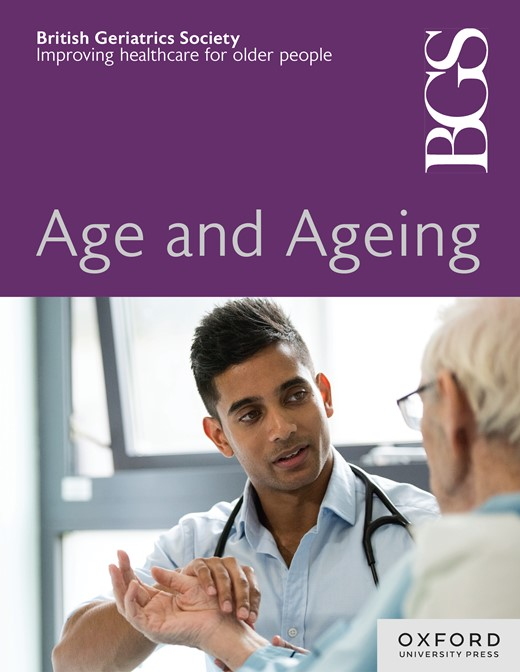社区老年人肌肉减少性肥胖与营养不良之间的关系
IF 6
2区 医学
Q1 GERIATRICS & GERONTOLOGY
引用次数: 0
摘要
随着年龄的增长,脂肪组织的增加和肌肉质量的减少促使研究者探索肌肉减少症和肥胖的共存,即肌肉减少性肥胖(sarcopenic obesity, SO)。由于饮食质量差,SO可能会导致营养不良,而营养不良可能会导致进一步的肌肉损失和代谢失衡,从而导致SO。目的是调查:(i)社区居住老年人中SO的患病率,(ii)两种不同营养不良方法的诊断能力,以及(iii) SO与营养不良之间的关系。方法邀请社区居住的老年人(≥65岁)参与研究。SO评估是根据ESPEN/EASO共识标准进行的。营养不良的评估基于全球营养不良领导倡议(GLIM)标准和迷你营养评估(MNA)。结果共纳入590例老年人,其中女性69.3%,平均年龄74.31±6.55岁。SO的总患病率为5.9% (n = 35)。根据GLIM标准,营养不良发生率为23.9%,而根据MNA标准,营养不良发生率为3.1%。两次测量结果的一致性为0.32。基于GLIM (P: 0.06, OR: 1.971, 95% CI: 0.966-4.024)或MNA (P: 0.948, OR: 1.934, 95% CI: 0.119-7.306), SO与营养不良之间没有关联。尽管GLIM标准和MNA之间诊断营养不良的一致性是公平的,但根据GLIM标准诊断为营养不良的参与者数量几乎是MNA的8倍。由GLIM或MNA定义的营养不良与SO之间没有关联。临床试验编号NCT05122104。本文章由计算机程序翻译,如有差异,请以英文原文为准。
The association between sarcopenic obesity and malnutrition in community-dwelling older adults
Background The increase in fat tissue and the decrease in muscle mass with advancing age have prompted researchers to explore the coexistence of sarcopenia and obesity, i.e. sarcopenic obesity (SO). SO may lead to malnutrition due to poor diet quality, while malnutrition may contribute to SO by causing further muscle loss and metabolic imbalances. Objectives The aims were to investigate: (i) the prevalence of SO in community-dwelling older adults, (ii) the diagnostic ability of two different malnutrition methods, and (iii) the association between SO and malnutrition. Methods Community-dwelling older adults (≥65 years) were invited to participate. SO assessment was conducted based on the ESPEN/EASO consensus criteria. Malnutrition was evaluated based on both the Global Leadership Initiative on Malnutrition (GLIM) criteria and the Mini-Nutritional Assessment (MNA). Results Five hundred and ninety older adults (69.3% women, mean age: 74.31 ± 6.55 years) were included in the study. The overall prevalence of SO was 5.9% (n = 35). The prevalence of malnutrition was 23.9% according to the GLIM criteria, while it was 3.1% according to MNA. The agreement between the two measurements was ĸ = 0.32. There was no association between SO and malnutrition based on either GLIM (P: .06, OR: 1.971, 95% CI: 0.966–4.024) or MNA (P: .948, OR: 1.934, 95% CI: 0.119–7.306). Conclusions Even though the agreement for diagnosing malnutrition between GLIM criteria and MNA was fair, the number of participants diagnosed with malnutrition by GLIM criteria was almost eight times higher than MNA. No association was established between SO and malnutrition defined by GLIM or MNA. Clinical trial number NCT05122104.
求助全文
通过发布文献求助,成功后即可免费获取论文全文。
去求助
来源期刊

Age and ageing
医学-老年医学
CiteScore
9.20
自引率
6.00%
发文量
796
审稿时长
4-8 weeks
期刊介绍:
Age and Ageing is an international journal publishing refereed original articles and commissioned reviews on geriatric medicine and gerontology. Its range includes research on ageing and clinical, epidemiological, and psychological aspects of later life.
 求助内容:
求助内容: 应助结果提醒方式:
应助结果提醒方式:


